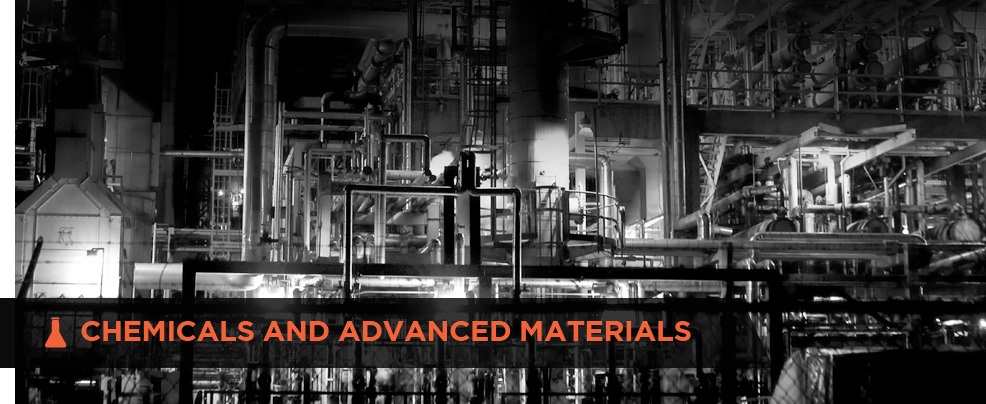Chemical and Advanced Materials
West Virginia has a long history as a pioneer and leader in the chemical and advanced material industries. Not only does the state have a large base of specialty chemical companies, many of which have specialized facilities and infrastructure, but West Virginia’s metals and alloys industry sector is globally competitive, producing high value-added materials and positioned to play an important role in the state’s economy. Furthermore, West Virginia’s Mid-Atlantic Research Technology and Innovation Center (MATRIC) is leveraging the expertise of ex-Dow employees to create new companies and launch new products, while the West Virginia Regional Technology Park represents a signature asset for the state to leverage moving forward.
Given this, TechConnectWV recognizes that there are multiple opportunities in research and development (R&D) and technology development applications related to both traditional and innovative chemicals and materials technologies. TCWV’s Chemicals and Advanced Materials (CAM) Sector is comprised of a diverse set of materials — including, for example, engineered wood products, specialized secondary metals and alloys, polymers, specialty chemicals, and other specialty materials. Chief among the goals of this sector are to increase value-added economic activity based on chemicals and materials resources, including: (1) high-value materials from carbon-based chemicals and products, (2) alternative energy and fuels, (3) aerospace, energy, and high-temperature applications, (4) environmental mitigation products, and (5) advanced technologies for high-value-added specialty products.
Opportunities
There are a variety of opportunities and reasons for TechConnectWV’s focus on the CAM cluster:
- The presence of a significant number of nonprofit and federal research institutions concentrating in materials science and chemical engineering. West Virginia University (WVU), Marshall University (MU), and the National Energy Technology Laboratory (NETL) produce an expanding body of intellectual property that enhances the state’s CAM cluster opportunities.
- The state’s core competency strengths include a robust variety of materials including electronic materials, composites, catalysts, carbon products, and bio-compatible products.
- The rapid development of prolific shale gas reserves in the state and region are providing signficant opportunities for ethane resources to feed the region’s chemical industries. Ethane is a major chemical feedstock and is used to produce ethylene, one of the two main building blocks for the petrochemical industry Use of ethane for new and existing facilities stands to revitalize and transform WV’s and the region’s chemical industry.
- Advanced applications for common West Virginia materials and by-products are a significant focus for development in West Virginia’s R&D institutions.
- West Virginia’s large-scale fossil-fuel resource industry is challenged by concerns over carbon dioxide emissions and global climate change, so the development of new uses for carbon resources and new technology to mitigate emissions is critically important to the state’s economic base.

